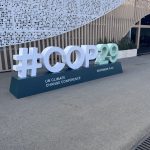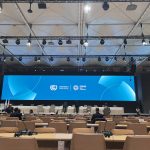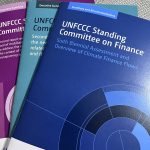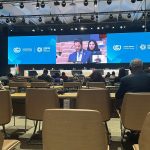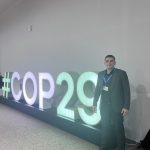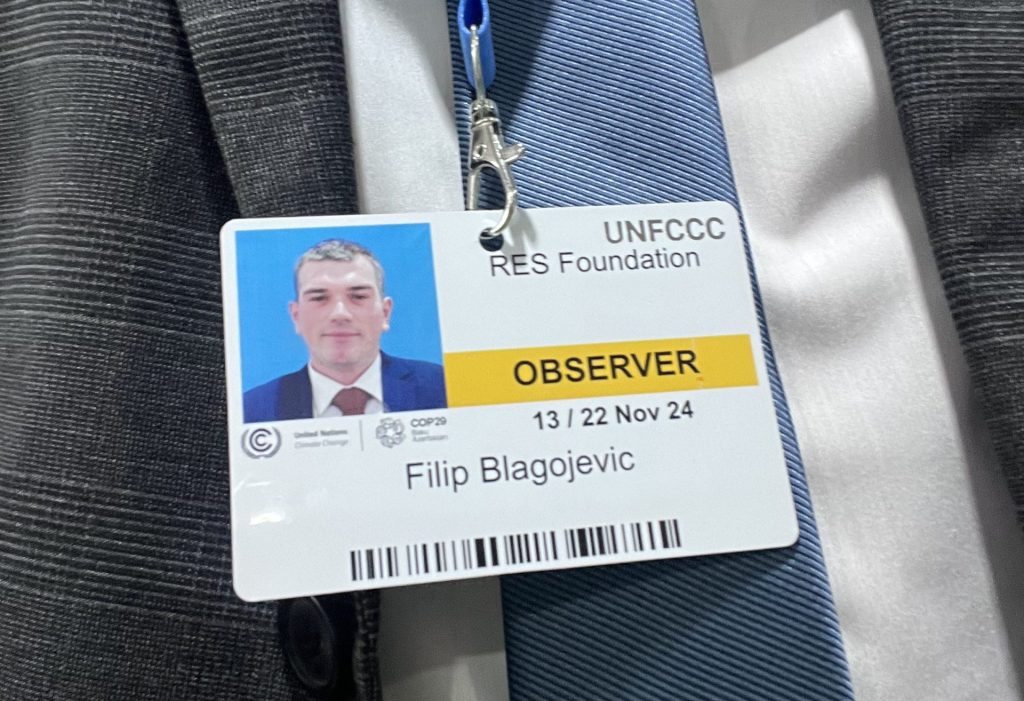
Report and photos: Filip Blagojević, youth delegate of RES Foundation in Baku
The blow of the ceremonial hammer and its handover to the newly elected president officially marked start of COP 29. This year, the COP is being held in Baku, the capital of Azerbaijan, and will last from November 11 to 22 and will be held at the Olympic Stadium in Baku.
The Conference of Parties (COP) is the main decision-making body within the United Nations Framework Convention on Climate Change (UNFCC), composed of almost 200 member countries around the world that have a common goal of combating climate change by limiting the increase in global temperature to 1.5 degrees Celsius and achieving net-zero emissions by 2050. The UNFCC represents an main strategic document, around which the signatory countries gather, in which the aforementioned main goals are defined, while later at the COPs, the countries gather to analyze their previous work towards the fulfillment of those goals and define further steps. At the COP, countries negotiate and debate about what specific moves and steps they will take to combat climate change, and the specific contributions of each country are also analyzed. Often the COP also results in binding agreements and contracts that all countries adopt in order to define concrete rules and steps towards meeting the goals. This is how the famous Kyoto Protocol and the Paris Agreement were created, precisely at these COPs of which they are the result (Kyoto at COP 3 – 1997 and the Paris Agreement at COP 21 – 2015). The first COP was held in 1995 in Berlin and has been held every year since then.
Just as each COP has a certain “theme” or the main field that it will deal with that year, with the aim of achieving the main goals, so this year, too, two main goals were highlighted, the first of which is the provision of international financial mechanisms to combat climate change that would be primarily aimed at supporting developing countries, those countries that may have contributed the least to global warming and suffer its consequences equally, perhaps even more. Another goal is to review and work on the “National Energy and Climate Plans”, which should be adopted by all countries with goals until 2030, and as the achieved goals and moves in these documents are revised and reviewed every 5 years, so will at this COP. It should be one of the main topics as a preparation for the next COP, which will also be a year of revision.
As the previous COP was specific because for the first time in the official and binding decisions on the transition from fossil fuels was found, so according to our observations, this one is also specific in that the issue of “climate justice” was already heard in the first official speeches. Is it just that developing countries bear the same burden of climate change, since their contribution was negligible compared to developed countries? And to some extent, a narrative is being set among countries that investing in energy efficiency and the fight against climate change is no longer a matter of luxury and good will, but a matter of obligation, not only the obligatory struggle and action within their own territories, but also beyond. Thus, the agenda included the search for ways for more developed countries to invest more money in aid to developing countries, initially in the amount of the promised 100 billion dollars. COP 29 will tell us how it will be resolved.

